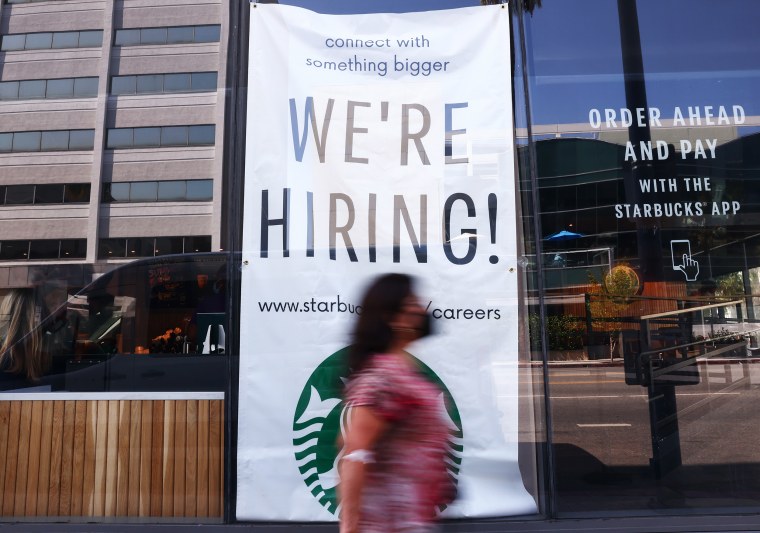We’ve all seen the statistics about the large number of women who withdrew from the labor force during the pandemic, meaning they’re not actively looking for work and are not counted as unemployed. This number, which peaked at 2.3 million, has started to come down. But according to analysis from the National Women’s Law Center, nearly 2 million women have not returned.
The exodus has largely been attributed to the overwhelming family care responsibilities women faced when day care facilities and schools closed. In other words, women were leaving for reasons that had nothing to do with their work performance.
RELATED: Return to Work Programs Come of Age
The good news is that except for a two month period when Covid first hit in March 2020, we’ve been seeing rapid growth of employer return-to-work programs, which provide a structured pathway back to the workforce for professionals returning to work after taking a career break lasting anywhere from one to over 20 years to do childcare, eldercare and other reasons.
Currently, there are nearly 110 in-house employer return to work programs, including some of the longest running programs at Morgan Stanley, Goldman Sachs, J.P. Morgan Chase and Credit Suisse, plus programs at private companies such as Vanguard, non-U.S. based companies such as TD Bank and Macquarie, and most recently, public sector employers led by the State of Utah. By another measure, our tracking at iRelaunch indicates roughly 40 percent of the Fortune 50 have their own return-to-work programs.
If you’re looking to jump back into the workforce after time off, check out these employer return-to-work programs here and here. Also, keep the following in mind:
As labor markets have tightened, we are seeing return-to-work programs being used to hire a broader swath of professionals with “non-traditional” backgrounds.
The definition of “career break” and the eligibility guidelines to apply for and participate in return-to-work programs are getting progressively looser. IBM, Oracle, Raytheon Technologies, Mastercard, Amazon and TD Bank have lowered the minimum number of years of career break from two years to one year in order to be eligible for their programs. Amazon and Ford include “underemployed” in their eligibility definition.
Individuals applying to return to work programs should not self-select out of the application process because they are unsure if they qualify. They should go ahead and apply, and let the employer decide if they are eligible.
This is consistent with the well-known advice given to women in general who often self-select out of applying for a particular role because they are not “100 percent qualified.” Occasional consulting, substitute teaching, or earning an income stream in an unrelated role to a relauncher’s primary field in order to generate a side income typically will not disqualify applicants.
When applying to these programs, applicants should make sure to clearly call out “career break” on their resumes as its own category.
This is where you should include any occasional paid work, along with substantive and relevant volunteer experiences and coursework in a bullet point listing of career break activities.
Realize your value as a return-to-work professional.
As a potential relauncher, you are educated, have work experience, and possess a groundedness and self-awareness that can only be achieved at a later life stage.
The career break provides you with the opportunity to step back and reflect on whether you were on the right career path to begin with. That means that you can be much more targeted in your job search, because you likely have a solid understanding of your interests and skills.
As a relauncher, you’re also familiar with working with multi-generational teams, different personality types and work deadlines. Finally, you are energized and excited about returning to work and you’re your enthusiasm will be felt by an employer's work teams and managers.

Remember that technological obsolescence is a temporary condition.
Even in highly technical fields, you can update or reskill. Access to free or inexpensive high-quality courses has been a game changer, although relaunchers sometimes may need to invest in specific credentialing or certifications in order to qualify for particular roles.
Career paths that include career breaks are becoming normalized, and employers can benefit from recognizing that.
The “pandemic exodus” has made the “career break decision” more widespread. Return to work programs are going to become more sophisticated, scale bigger and be adopted by more employers as we emerge from the pandemic, which is great news for professionals on career break everywhere and for the employers that hire them.
Carol Fishman Cohen is the CEO and a cofounder of iRelaunch, a career-reentry consulting, training, and events company. iRelaunch’s 30th Return to Work Conference will be October 5-7, 2021. Register here. Cohen’s TED talk “How to get back to work after a career break” has more than 3.6 million views and has been translated into 30 languages. She is the author of the Harvard Business Review articles “Return to Work Programs Come of Age,” and “The 40-Year-Old Intern” and writes regularly for HBR on career-reentry topics.
